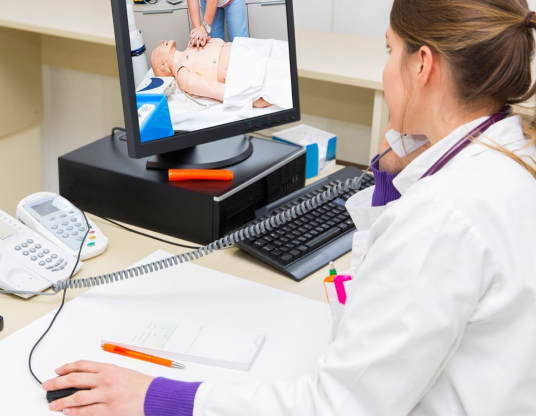Chapter 4: Adult CPR—Compressions
Before starting Cardiopulmonary Resuscitation (CPR), it’s essential to follow a few quick safety and assessment steps:
- First, check that the scene is safe. If personal protective equipment (PPE) is available, put it on before approaching the victim.
- [2021 Interim Guidance] During the COVID-19 pandemic, most lay responders may not have access to proper PPE. To reduce the risk of transmission, use a face mask or cloth to cover your mouth and nose—and the victim’s—while performing CPR.
- Check if the person is breathing. Tap the person gently and shout, “Are you okay?” If they don’t respond, continue with the next steps.
- Remember: Gasping or agonal breaths are not considered normal breathing.
- Call 9-1-1 immediately, or instruct someone nearby to do so. If an Automated External Defibrillator (AED) is nearby, have someone retrieve it.
- Check the person’s pulse for no more than 10 seconds. If you’re unsure or unable to detect a pulse, begin CPR immediately.
- For adults and children, check the carotid artery in the neck. For infants, use the brachial artery on the inside of the upper arm.
Chest Compression Steps for an Adult:
For CPR purposes, anyone who has entered or completed puberty is treated as an adult.
- Position yourself beside the victim.
- Ensure the person is lying flat on their back on a firm, stable surface.
- If the person is face-down and unresponsive, carefully roll them onto their back, supporting the head, neck, and spine.
- Quickly remove any clothing covering the chest.
- For hand placement:
- Place the heel of one hand on the center of the chest, on the lower half of the breastbone (sternum), between the nipples.
- Place your other hand on top and interlace the fingers.
- Keep your fingers off the chest to avoid applying pressure to the ribs.
- To position your body correctly, kneel beside the chest. Keep your arms straight, shoulders directly over your hands, and elbows locked.
- Push hard and fast—compress the chest at least 2 inches, but no more than 2.4 inches deep, at a rate of 100 to 120 compressions per minute.
- Let the chest fully rise back up after each compression.
When Two Rescuers Are Present:
If a second rescuer is available:
- Have them activate the Emergency Response System and get the AED.
- The first rescuer should stay with the victim, uncover the chest, and begin compressions.
- Once both rescuers are present, alternate compressions approximately every 2 minutes to prevent fatigue.
- Remind each other to keep compressions between 2 and 2.4 inches deep, and to allow full chest recoil each time.
This chapter in your Online CPR/AED Course walks you through how to begin CPR for an unresponsive adult, using proper technique to increase the chance of survival until help arrives.
